|
Email | CV (full) | Resume (one-page) | Google Scholar | Github | LinkedIn I am a researcher with broad interests in procedural content generation, game AI, machine learning, generative modeling and computational creativity. I received my PhD in Computer Science from the Khoury College of Computer Sciences at Northeastern University, advised by Seth Cooper. My PhD work focused on applying deep latent variable models for generating and blending content for games and enabling various game design tasks. Outside of my dissertation focus, I've worked on a variety of game AI research projects involving behavior trees, dynamic difficulty adjustment, matchmaking, pathfinding and level design. During my PhD, I also interned at Microsoft Research NYC, Electronic Arts and on the Applied AI team at Zynga. |
Publications |
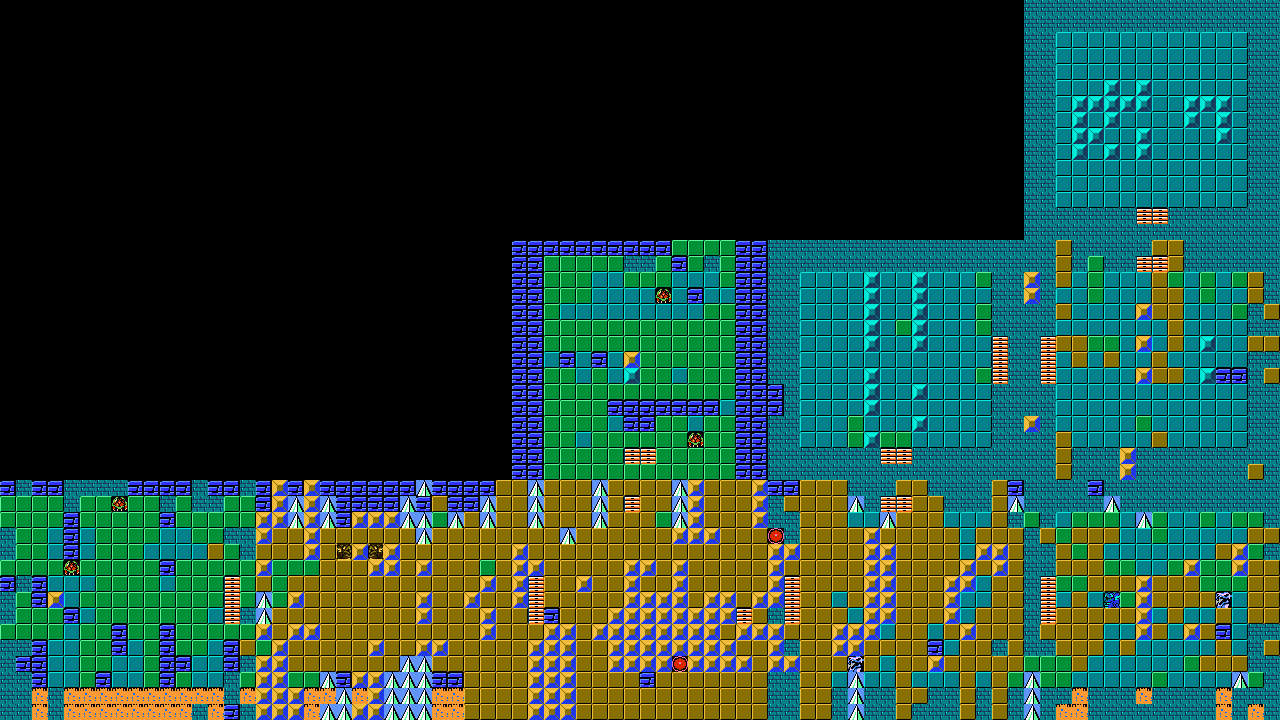 |
Anurag Sarkar, Seth Cooper IEEE Transactions on Games (ToG), 2023 pdf | abstract | bibtex We present latent combinational game design---an approach for generating playable games that blend a given set of games in a desired combination using deep generative latent variable models. We use Gaussian Mixture Variational Autoencoders (GMVAEs) which model the VAE latent space via a mixture of Gaussian components. Through supervised training, each component encodes levels from one game and lets us define blended games as linear combinations of these components. This enables generating new games that blend the input games as well as controlling the relative proportions of each game in the blend. We also extend prior blending work using conditional VAEs and compare against the GMVAE and additionally introduce a hybrid conditional GMVAE (CGMVAE) architecture which lets us generate whole blended levels and layouts. Results show that these approaches can generate playable games that blend the input games in specified combinations. We use both platformers and dungeon-based games to demonstrate our results.
@article{sarkar2023lcgd,
title={Latent Combinational Game Design},
author={Sarkar, Anurag and Cooper, Seth},
journal={IEEE Transactions on Games},
year={2023},
publisher={IEEE}
}
|
 |
Anurag Sarkar, Matthew Guzdial, Sam Snodgrass, Adam Summerville, Tiago Machado, Gillian Smith IEEE Transactions on Games (ToG), 2023 pdf | abstract | bibtex We introduce the concept of Procedural Content Generation via Knowledge Transformation (PCG-KT), a new lens and framework for characterizing PCG methods and approaches in which content generation is enabled by the process of knowledge transformation---transforming knowledge derived from one domain in order to apply it in another. Our work is motivated by a substantial number of recent PCG works that focus on generating novel content via repurposing derived knowledge. Such works have involved, for example, performing transfer learning on models trained on one game's content to adapt to another game's content, as well as recombining different generative distributions to blend the content of two or more games. Such approaches arose in part due to limitations in PCG via Machine Learning (PCGML) such as producing generative models for games lacking training data and generating content for entirely new games. In this paper, we categorize such approaches under this new lens of PCG-KT by offering a definition and framework for describing such methods and surveying existing works using this framework. Finally, we conclude by highlighting open problems and directions for future research in this area.
@article{sarkar2023pcgkt,
title={Procedural Content Generation via Knowledge Transformation (PCG-KT)},
author={Sarkar, Anurag and Guzdial, Matthew and Snodgrass, Sam
and Summerville, Adam and Machado, Tiago and Smith, Gillian},
journal={IEEE Transactions on Games},
year={2023},
publisher={IEEE}
}
|
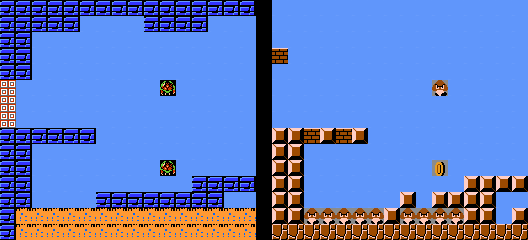 |
Anurag Sarkar, Seth Cooper AAAI Conference on Artificial Intelligence and Interactive Digital Entertainment (AIIDE), 2022
pdf |
abstract |
bibtex |
slides |
video |
code
We present tile2tile, an approach for style transfer between levels of tile-based platformer games. Our method involves training models that translate levels from a lower-resolution sketch representation based on tile affordances to the original tile representation for a given game. This enables these models, which we refer to as filters, to translate level sketches into the style of a specific game. Moreover, by converting a level of one game into sketch form and then translating the resulting sketch into the tiles of another game, we obtain a method of style transfer between two games. We use Markov random fields and autoencoders for learning the game filters and apply them to demonstrate style transfer between levels of Super Mario Bros, Kid Icarus, Mega Man and Metroid.
@inproceedings{sarkar2022tile,
title={tile2tile: Learning Game Filters
for Platformer Style Transfer},
author={Sarkar, Anurag and Cooper, Seth},
booktitle = {Proceedings of the
AAAI Conference on Artificial Intelligence
and Interactive Digital Entertainment (AIIDE)},
year={2022}
}
|
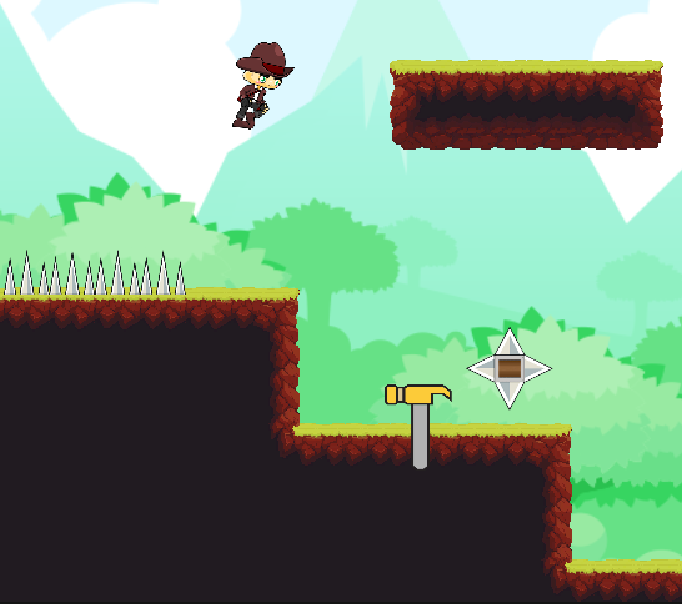 |
Anurag Sarkar, Seth Cooper IEEE Conference on Games (CoG), 2022 pdf | abstract | bibtex | slides | video Prior work using skill chains for matchmaking- based dynamic difficulty adjustment in human computation games required skill chains to be manually defined for a game, and each level to be manually annotated with the individual skills needed to complete that level. In this work, we present two approaches for defining level orderings for DDA in the platformer HCG Iowa James without using such manually-defined skill chains and annotations. The first involves sequences of action-context pairs found in gameplay traces. The second consists of applying K-means clustering on segments of levels. Our results show that both new approaches outperform baseline random level ordering and perform similarly to the skill chain approach
@inproceedings{sarkar2022ordering,
title={Ordering Levels in Human Computation
Games using Playtraces and Level Structure},
author={Sarkar, Anurag and Cooper, Seth},
booktitle = {Proceedings of the
IEEE Conference on Games (CoG)},
year={2022}
}
|
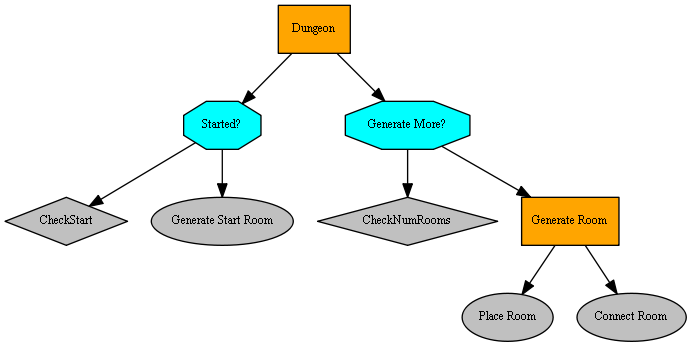 |
Anurag Sarkar, Seth Cooper AIIDE Workshop on Experimental AI in Games (EXAG), 2021 pdf | abstract | bibtex | slides | code Behavior trees (BTs) are a popular method for modeling NPC and enemy AI behavior and have been widely used in commercial games. In this work, rather than use BTs to model game playing agents, we use them for modeling game design agents, defining behaviors as content generation tasks rather than in-game actions. Similar to how traditional BTs enable modeling behaviors in a modular and dynamic manner, BTs for PCG enable simple subtrees for generating parts of levels to be combined modularly to form complex trees for generating whole levels as well as generators that can dynamically vary the generated content. We refer to this approach as Procedural Content Generation using Behavior Trees, or PCGBT, and demonstrate it by using BTs to model generators for Super Mario Bros., Mega Man and Metroid levels as well as dungeon layouts and discuss several ways in which this paradigm could be applied and extended in the future.
@inproceedings{sarkar2021pcgbt,
title={Procedural Content Generation
using Behavior Trees (PCGBT)},
author={Sarkar, Anurag and Cooper, Seth},
booktitle = {Proceedings of the
Experimental AI in Games (EXAG)
Workshop at AIIDE},
year={2021}
}
|
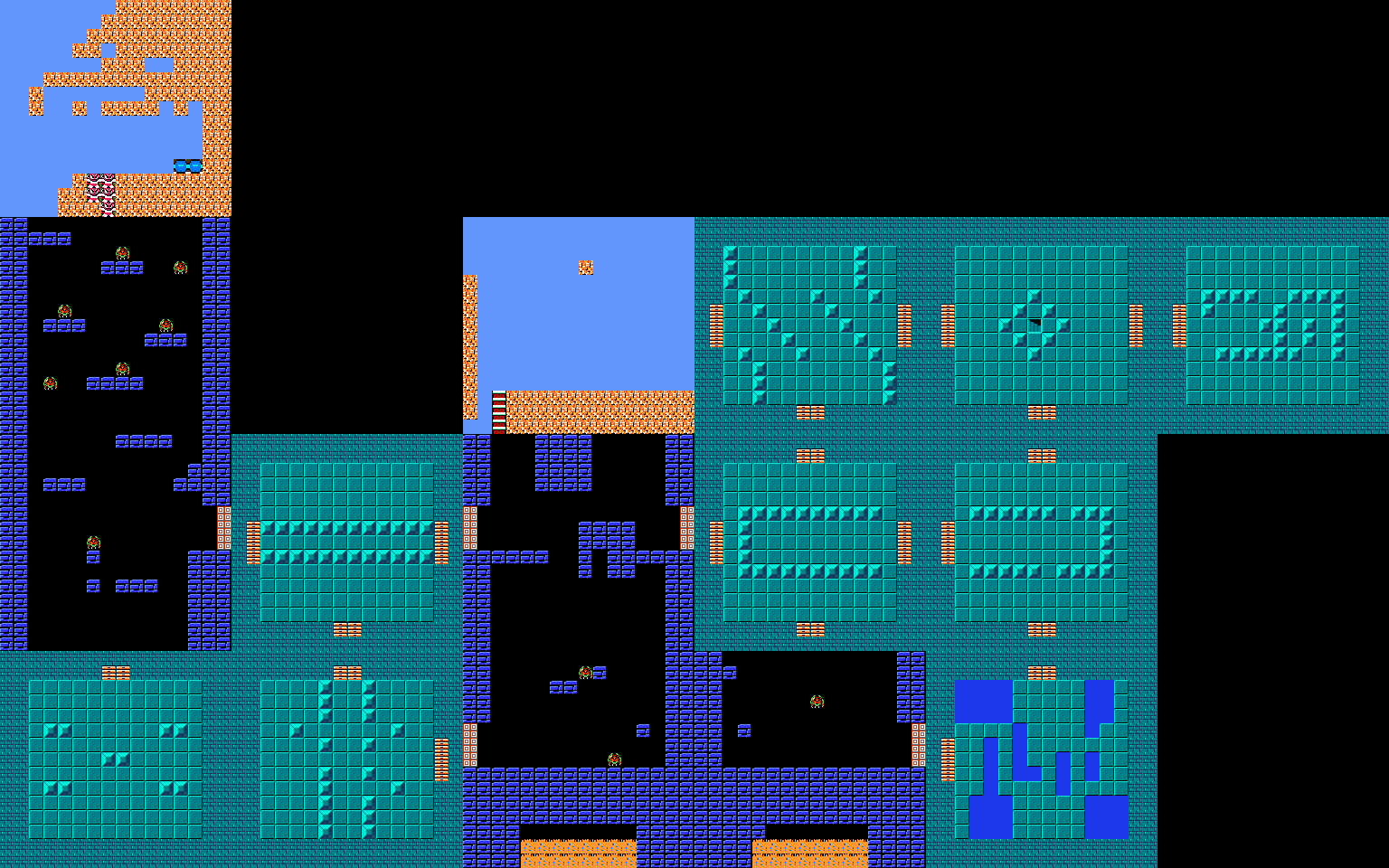 |
Anurag Sarkar, Seth Cooper IEEE Conference on Games (CoG), 2021 pdf | abstract | bibtex | slides | code Variational autoencoders (VAEs) have been used in prior works for generating and blending levels from different games. To add controllability to these models, conditional VAEs (CVAEs) were recently shown capable of generating output that can be modified using labels specifying desired content, albeit working with segments of levels and platformers exclusively. We expand these works by using CVAEs for generating whole platformer and dungeon levels, and blending levels across these genres. We show that CVAEs can reliably control door placement in dungeons and progression direction in platformer levels. Thus, by using appropriate labels, our approach can generate whole dungeons and platformer levels of interconnected rooms and segments respectively as well as levels that blend dungeons and platformers. We demonstrate our approach using The Legend of Zelda, Metroid, Mega Man and Lode Runner.
@inproceedings{sarkar2021dungeon,
title={Dungeon and Platformer Level
Blending and Generation using Conditional VAEs},
author={Sarkar, Anurag and Cooper, Seth},
booktitle = {Proceedings of the
IEEE Conference on Games (CoG)},
year={2021}
}
|
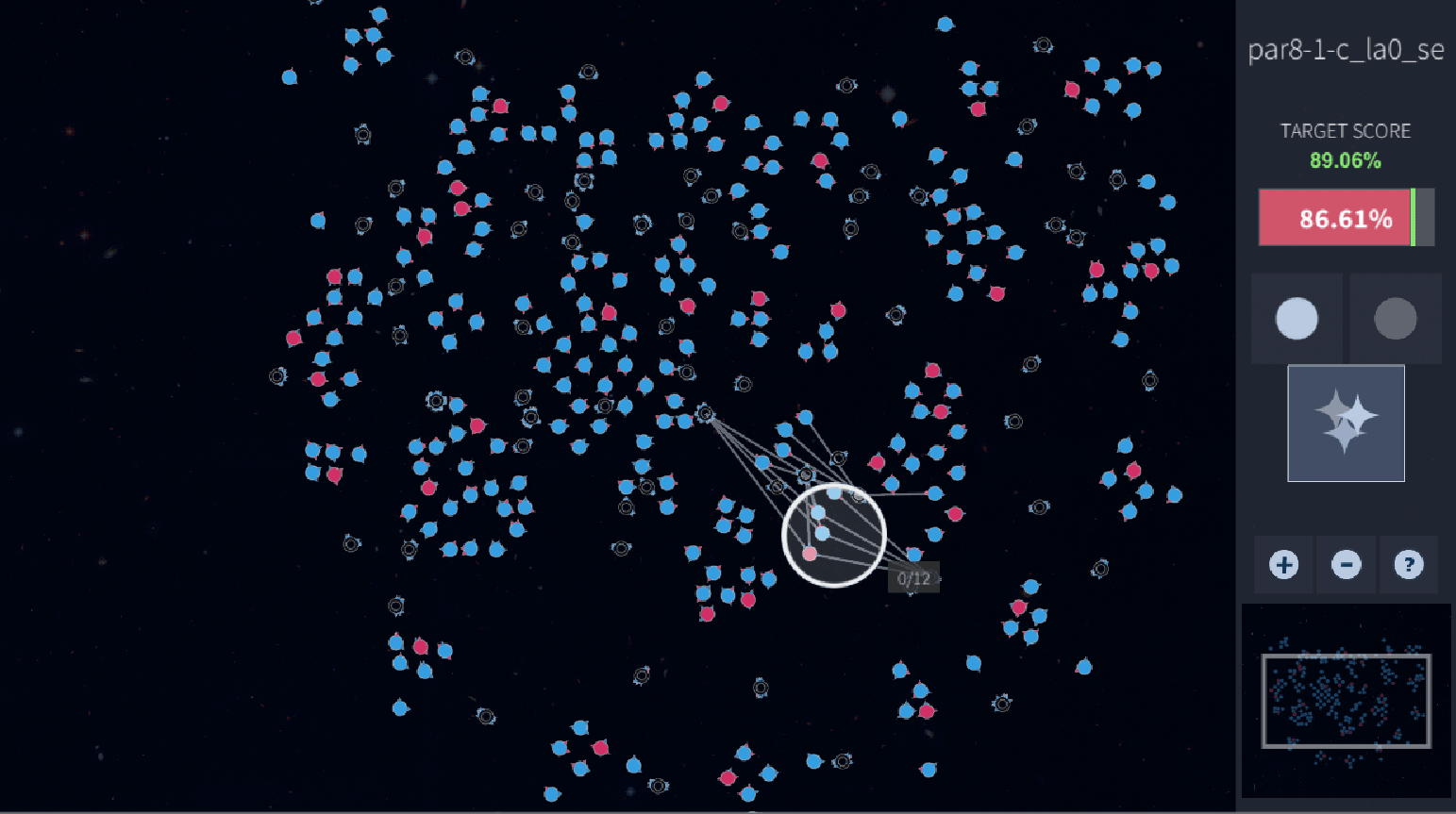 |
Anurag Sarkar, Seth Cooper IEEE Conference on Games (CoG), 2021 pdf | abstract | bibtex | slides We present a fully online system for skill and ratings-based dynamic difficulty adjustment (DDA) in human computation games (HCGs). Prior work used an initial offline phase for collecting level ratings to avoid cold-start when using the system online. Further, such systems set a fixed target score win/lose threshold for each level. In this work, we address these issues by 1) using an epsilon-greedy variant of the ratings and skill-based DDA algorithm and 2) applying rating arrays, proposed in past work but not yet used in an online setting. We demonstrate our system in two online matchmaking experiments using two HCGs. Results suggest that the epsilon-greedy modification helps address the cold-start and that using rating arrays leads to players completing more levels.
@inproceedings{sarkar2021online,
title={An Online System for
Player-vs-Level Matchmaking in
Human Computation Games},
author={Sarkar, Anurag and Cooper, Seth},
booktitle = {Proceedings of the
IEEE Conference on Games (CoG)},
year={2021}
}
|
 |
Anurag Sarkar, Seth Cooper ACM Foundations of Digital Games (FDG), 2021 pdf | abstract | bibtex | slides Several recent works have demonstrated the use of variational autoencoders (VAEs) for both generating levels in the style of existing games as well as blending levels across different games. Additionally, quality-diversity (QD) algorithms have also become popular for generating varied game content by using evolution to explore a search space while focusing on both variety and quality. In order to reap the benefits of both these approaches, we present a level generation and game blending approach that combines the use of VAEs and QD algorithms. Specifically, we train VAEs on game levels and then run the MAP-Elites QD algorithm using the learned latent space of the VAE as the search space. The latent space captures the properties of the games whose levels we want to generate and blend, while MAP-Elites searches this latent space to find a diverse set of levels optimizing a given objective such as playability. We test our method using models for 5 different platformer games as well asa blended domain spanning 3 of these games. Our results show that using MAP-Elites in conjunction with VAEs enables the generation of a diverse set of playable levels not just for each individual game but also for the blended domain while illuminating game-specific regions of the blended latent space.
@inproceedings{sarkar2021generating,
title={Generating and Blending Game Levels via
Quality-Diversity in the Latent Space of
a Variational Autoencoder},
author={Sarkar, Anurag and Cooper, Seth},
booktitle = {Proceedings of the
Foundations of Digital Games},
year={2021}
}
|
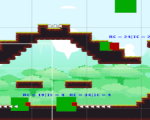 |
Pratheep Kumar Paranthaman, Anurag Sarkar, Seth Cooper Game Analytics Workshop (GAW) at the ACM Foundations of Digital Games, 2021 pdf | abstract | bibtex Player engagement and task effectiveness are crucial factors in human computation games. However, collecting data and making design changes towards these goals can be time-consuming. In this work, we incorporate rapid crowdsourced playtesting via the ARAPID (As Rapid As Possible Iterative Design) system to iterate on the design of a human computation platformer game. For each level in the game, the player’s goal is to collect items relevant to a given scenario while avoiding irrelevant items. We extended the visualization modules in the existing ARAPID system to include a multi-level data visualization and item collection task effectiveness plot. A designer from the project team used the system to iterate on the game's level design, with the goal of increasing relevant and decreasing irrelevant items collected by players. A large-scale test with the game versions created during the iterative analysis found that the designer was able to use ARAPID to improve the specified goal parameters.
@inproceedings{paranthaman2021applying,
title={Applying Rapid Crowdsourced
Playtesting to a Human Computation Game},
author={Paranthaman, Pratheep Kumar and
Sarkar, Anurag and Cooper, Seth},
booktitle = {Proceedings of the
Game Analytics Workshop at the
Foundations of Digital Games},
year={2021}
}
|
 |
Anurag Sarkar, Zhihan Yang, Seth Cooper AIIDE Workshop on Experimental AI in Games (EXAG), 2020 pdf | abstract | bibtex | slides | code Prior research has shown variational autoencoders (VAEs) to be useful for generating and blending game levels by learning latent representations of existing level data. We build on such models by exploring the level design affordances and applications enabled by conditional VAEs (CVAEs). CVAEs augment VAEs by allowing them to be trained using labeled data, thus enabling outputs to be generated conditioned on some input. We studied how increased control in the level generation process and the ability to produce desired outputs via training on labeled game level data could build on prior PCGML methods. Through our results of training CVAEs on levels from Super Mario Bros., Kid Icarus and Mega Man, we show that such models can assist in level design by generating levels with desired level elements and patterns as well as producing blended levels with desired combinations of games.
@inproceedings{sarkar2020conditional,
Author = {Sarkar, Anurag and Yang, Zhihan and
Cooper, Seth},
Title = {Conditional Level Generation and
Game Blending},
Booktitle = {Proceedings of the
Experimental AI in Games (EXAG)
Workshop at AIIDE},
Year = {2020}
}
|
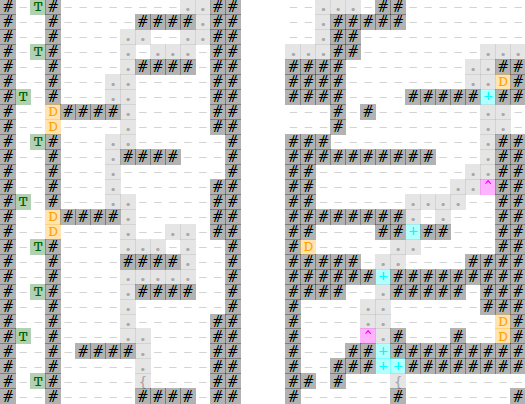 |
Seth Cooper, Anurag Sarkar AIIDE Workshop on Experimental AI in Games (EXAG), 2020 pdf | abstract | bibtex | code A key concern for procedural level generation is ensuring that generated levels are in fact playable. One approach for determining playability is using pathfinding agents to test if generated levels can be completed. This typically involves following an iterative loop of generating candidate levels until the agent is able to successfully complete a playthrough, discarding the failed level and starting the generation process over each time the agent fails. In this paper, we present a new approach for generating playable levels that leverages pathfinding agents, not to simply test levels for playability, but to perform level repair to fix generated levels that are unplayable. By augmenting a simple pathfinding agent to be able to take moves that would require modifying the level, our approach can fix unplayable levels without having to regenerate a new level from scratch. We compared our repair agent to a default agent on three PCGML level generators each for Super Mario Bros. and Kid Icarus, and found the repair agent was able to fix the majority of levels, taking time that ranged from similar to the default agent to around 4x its time.
@inproceedings{cooper2020pathfinding,
Author = {Cooper,Seth and Sarkar, Anurag},
Title = {Pathfinding Agents for
Platformer Level Repair},
Booktitle = {Proceedings of the
Experimental AI in Games (EXAG)
Workshop at AIIDE},
Year = {2020}
}
|
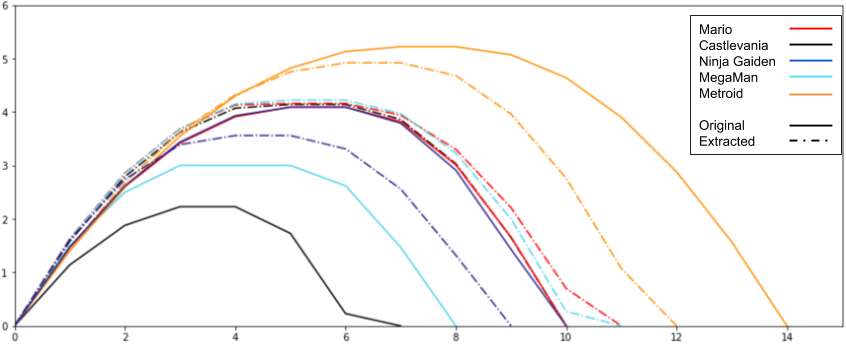 |
Adam Summerville, Anurag Sarkar, Sam Snodgrass, Joseph Osborn AIIDE Workshop on Experimental AI in Games (EXAG), 2020 pdf | abstract | bibtex Several recent PCGML methods have focused on generating game levels and content that blend the properties of multiple games. However, these works ignore the fact that blended levels must in some way have blended physics models that enable playable levels. In this work, we present an approach for extracting jump physics models for such blended game domains. We make use of variational autoencoders (VAEs) trained on level data from six platformers, encoded using a previously introduced path and affordance vocabulary. Our results show that the extraction model is able to reasonably recreate the original physics models when given ground truth paths, and is able to produce physics models that can reliably allow an agent to play the generated levels. We also find that there are promising results for blended physics models behaving intuitively between physics models of the original games being blended.
@inproceedings{summerville2020extracting,
Author = {Summerville, Adam and Sarkar, Anurag and
Snodgrass, Sam and Osborn, Joseph},
Title = {Extracting Physics Models from
Blended Platformer Game Levels},
Booktitle = {Proceedings of the
Experimental AI in Games (EXAG)
Workshop at AIIDE},
Year = {2020}
}}
|
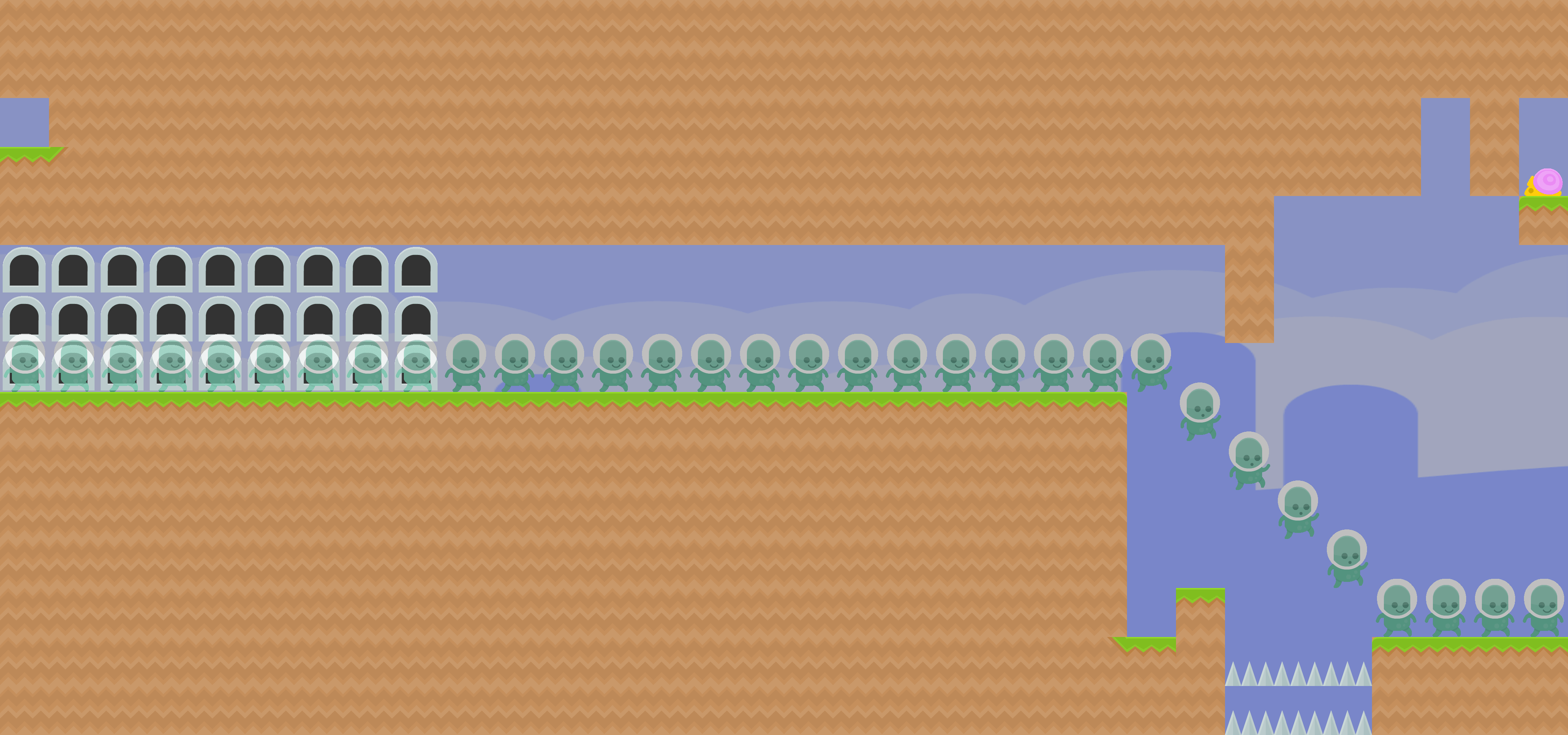 |
Anurag Sarkar, Adam Summerville, Sam Snodgrass, Gerard Bentley, Joseph Osborn AAAI Conference on Artificial Intelligence and Interactive Digital Entertainment (AIIDE), 2020 pdf | abstract | bibtex | slides | video Techniques for procedural content generation via machine learning (PCGML) have been shown to be useful for generating novel game content. While used primarily for producing new content in the style of the game domain used for training, recent works have increasingly started to explore methods for discovering and generating content in novel domains via techniques such as level blending and domain transfer. In this paper, we build on these works and introduce a new PCGML approach for producing novel game content spanning multiple domains. We use a new affordance and path vocabulary to encode data from six different platformer games and train variational autoencoders on this data, enabling us to capture the latent level space spanning all the domains and generate new content with varying proportions of the different domains.
@inproceedings{sarkar2020exploring,
Author = {Sarkar, Anurag and Summerville, Adam and
Snodgrass, Sam and Bentley, Gerard and Osborn, Joseph},
Title = {Exploring Level Blending across
Platformers via Paths and Affordances},
Booktitle = {Proceedings of the
AAAI Conference on Artificial Intelligence
and Interactive Digital Entertainment (AIIDE)},
Year = {2020}
}
|
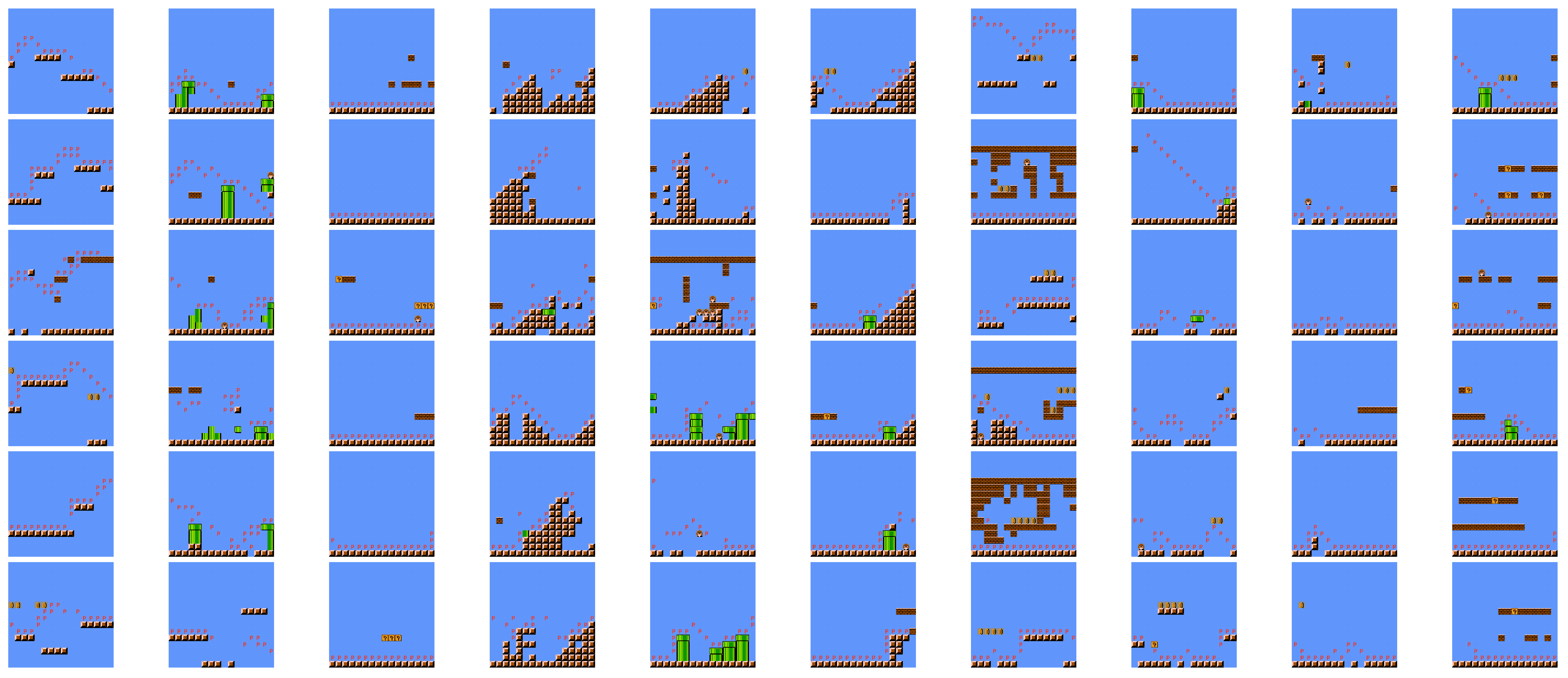 |
Zhihan Yang, Anurag Sarkar, Seth Cooper AAAI Conference on Artificial Intelligence and Interactive Digital Entertainment (AIIDE), 2020 pdf | abstract | bibtex Variational autoencoders (VAEs) have been shown to be able to generate game levels but require manual exploration of the learned latent space to generate outputs with desired attributes. While conditional VAEs address this by allowing generation to be conditioned on labels, such labels have to be provided during training and thus require prior knowledge which may not always be available. In this paper, we apply Gaussian Mixture VAEs (GMVAEs), a variant of the VAE which imposes a mixture of Gaussians (GM) on the latent space, unlike regular VAEs which impose a unimodal Gaussian. This allows GMVAEs to cluster levels in an unsupervised manner using the components of the GM and then generate new levels using the learned components. We demonstrate our approach with levels from Super Mario Bros., Kid Icarus and Mega Man. Our results show that the learned components discover and cluster level structures and patterns and can be used to generate levels with desired characteristics.
@inproceedings{yang2020game,
Author = {Yang, Zhihan and Sarkar, Anurag and
Cooper, Seth},
Title = {Game Level Clustering and
Generation using Gaussian Mixture VAEs},
Booktitle = {Proceedings of the
AAAI Conference on Artificial Intelligence
and Interactive Digital Entertainment (AIIDE)},
Year = {2020}
}
|
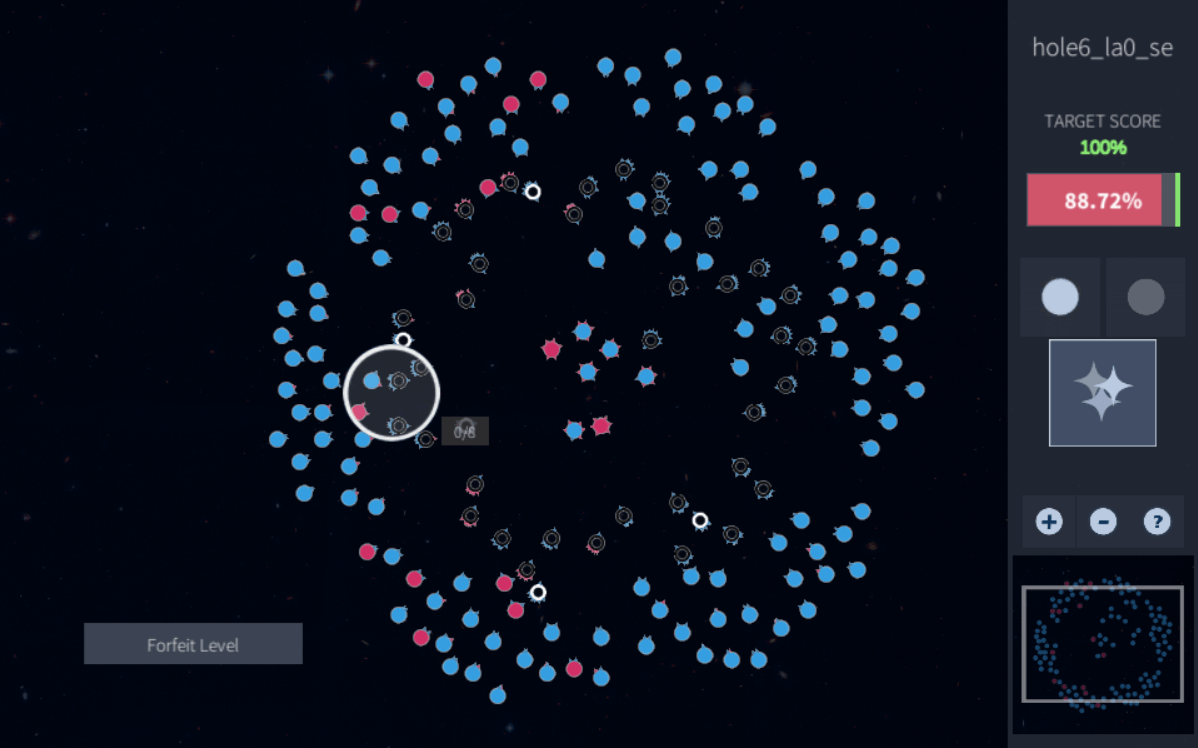 |
Anurag Sarkar, Seth Cooper AAAI Conference on Artificial Intelligence and Interactive Digital Entertainment (AIIDE), 2020 pdf | abstract | bibtex | slides | video Skill chains define how in-game skills build on each other and the order in which players ideally acquire them during gameplay. This can enable dynamic difficulty adjustment (DDA) by serving levels based on the skills that players currently have and those required to solve a given level. Similarly, DDA can also be achieved by using rating systems to match players with suitable levels by assigning ratings to players and levels based on ability and difficulty respectively. However, the relative effects of these two methods remain unclear, particularly in the context of human computation games (HCGs). In this paper, we present a general model for using skill chains and rating systems in a combined DDA system along with an evaluation comparing the two for difficulty balancing within HCGs, focusing on the relative merits of both methods when used separately as well as together. We evaluate our methods using the HCGs Iowa James and Paradox. Our findings suggest that incorporating skill chains can improve upon previously shown benefits of using only rating systems for DDA in HCGs.
@inproceedings{sarkar2020evaluating,
Author = {Sarkar, Anurag and Cooper, Seth},
Title = {Evaluating and Comparing
Skill Chains and Rating Systems for
Dynamic Difficulty Adjustment},
Booktitle = {Proceedings of the
AAAI Conference on Artificial Intelligence
and Interactive Digital Entertainment (AIIDE)},
Year = {2020}
}
|
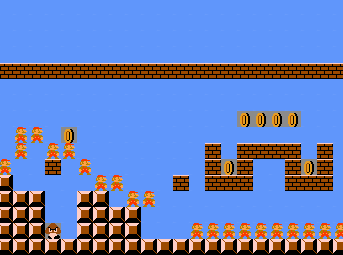 |
Anurag Sarkar, Seth Cooper IEEE Conference on Games (CoG), 2020 Best Paper Nomination pdf | abstract | bibtex | slides | video In recent years, machine learning (ML) systems have been increasingly applied for performing creative tasks. Such creative ML approaches have seen wide use in the domains of visual art and music for applications such as image and music generation and style transfer. However, similar creative ML techniques have not been as widely adopted in the domain of game design despite the emergence of ML-based methods for generating game content. In this paper, we argue for leveraging and repurposing such creative techniques for designing content for games, referring to these as approaches for Game Design via Creative ML (GDCML). We highlight existing systems that enable GDCML and illustrate how creative ML can inform new systems via example applications and a proposed system.
@inproceedings{sarkar2020gdcml,
Author = {Sarkar, Anurag and Cooper, Seth},
Title = {Towards Game Design via
Creative Machine Learning (GDCML)},
Booktitle = {Proceedings of the
IEEE Conference on Games (CoG)},
Year = {2020}
}
|
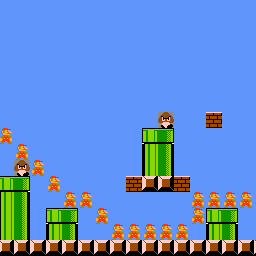 |
Anurag Sarkar, Seth Cooper ACM FDG Workshop on Procedural Content Generation (PCG) in Games, 2020 pdf | abstract | bibtex | slides Existing methods of level generation using latent variable models such as VAEs and GANs do so in segments and produce the final level by stitching these separately generated segments together. In this paper, we augment such methods by training VAEs to learn a sequential model of segment generation such that generated segments logically follow from prior segments. By further combining the VAE with a classifier that determines whether to place the generated segment to the top, bottom, left or right of the previous segment, we obtain a pipeline that enables the generation of arbitrarily long levels that progress in any of these four directions and are composed of segments that logically follow one another. In addition to generating more coherent levels of non-fixed length, this method also enables implicit blending of levels from separate games that do not have similar orientation. We demonstrate our approach using levels from Super Mario Bros., Kid Icarus and Mega Man, showing that our method produces levels that are more coherent than previous latent variable-based approaches and are capable of blending levels across games.
@inproceedings{sarkar2020sequential,
Author = {Sarkar, Anurag and Cooper, Seth},
Title = {Sequential Segment-based Level
Generation and Blending using Variational
Autoencoders},
Booktitle = {Proceedings of the
11th Workshop on Procedural Content
Generation in Games},
Year = {2020}
}
|
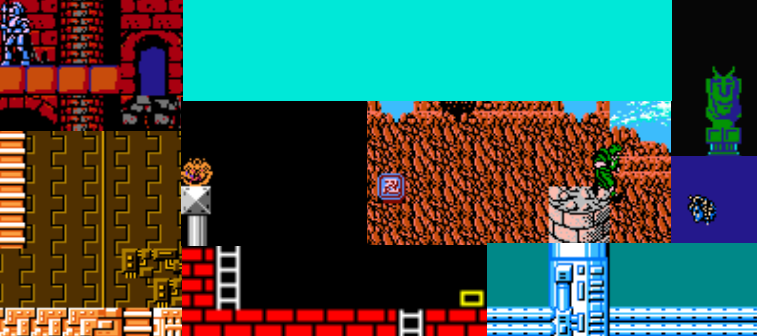 |
Sam Snodgrass, Anurag Sarkar ACM Foundations of Digital Games (FDG), 2020 pdf | abstract | bibtex Procedural content generation via machine learning (PCGML) has demonstrated its usefulness as a content and game creation approach, and has been shown to be able to support human creativity. An important facet of creativity is combinational creativity or the recombination, adaptation, and reuse of ideas and concepts between and across domains. In this paper, we present a PCGML approach for level generation that is able to recombine, adapt, and reuse structural patterns from several domains to approximate unseen domains. We extend prior work involving example-driven Binary Space Partitioning for recombining and reusing patterns in multiple domains, and incorporate Variational Autoencoders (VAEs) for generating unseen structures. We evaluate our approach by blending across 7 domains and subsets of those domains. We show that our approach is able to blend domains together while retaining structural components. Additionally, by using different groups of training domains our approach is able to generate both 1) levels that reproduce and capture features of a target domain, and 2) levels that have vastly different properties from the input domain.
@inproceedings{snodgrass2020multi,
Author = {Snodgrass, Sam and Sarkar, Anurag},
Title = {Multi-Domain Level Generation and
Blending with Sketches via Example-Driven BSP
and Variational Autoencoders},
Booktitle = {Proceedings of the
Foundations of Digital Games},
Year = {2020}
}
|
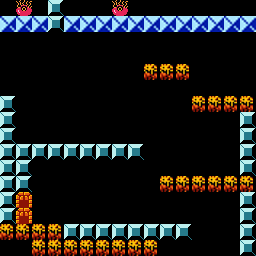 |
Anurag Sarkar NeurIPS Workshop on Machine Learning for Creativity and Design, 2019 pdf | abstract | bibtex | code | poster Creative AI refers to the application of AI techniques, primarily machine learning, for performing creative tasks such as generating art and music. In this paper, we present exploratory work that demonstrates and argues for leveraging such creative AI techniques for game design. We train variational autoencoders (VAEs) on levels from the games Super Mario Bros. and Kid Icarus and show how the affordances of the learned models can help inform co-creative game and level design, similar to applications of creative AI and machine learning in visual art and music.
@inproceedings{sarkar19game,
Author = {Sarkar, Anurag},
Title = {Game Design using Creative AI},
Booktitle = {NeurIPS 2019 Workshop on
Machine Learning for Creativity and
Design},
Year = {2019}
}
|
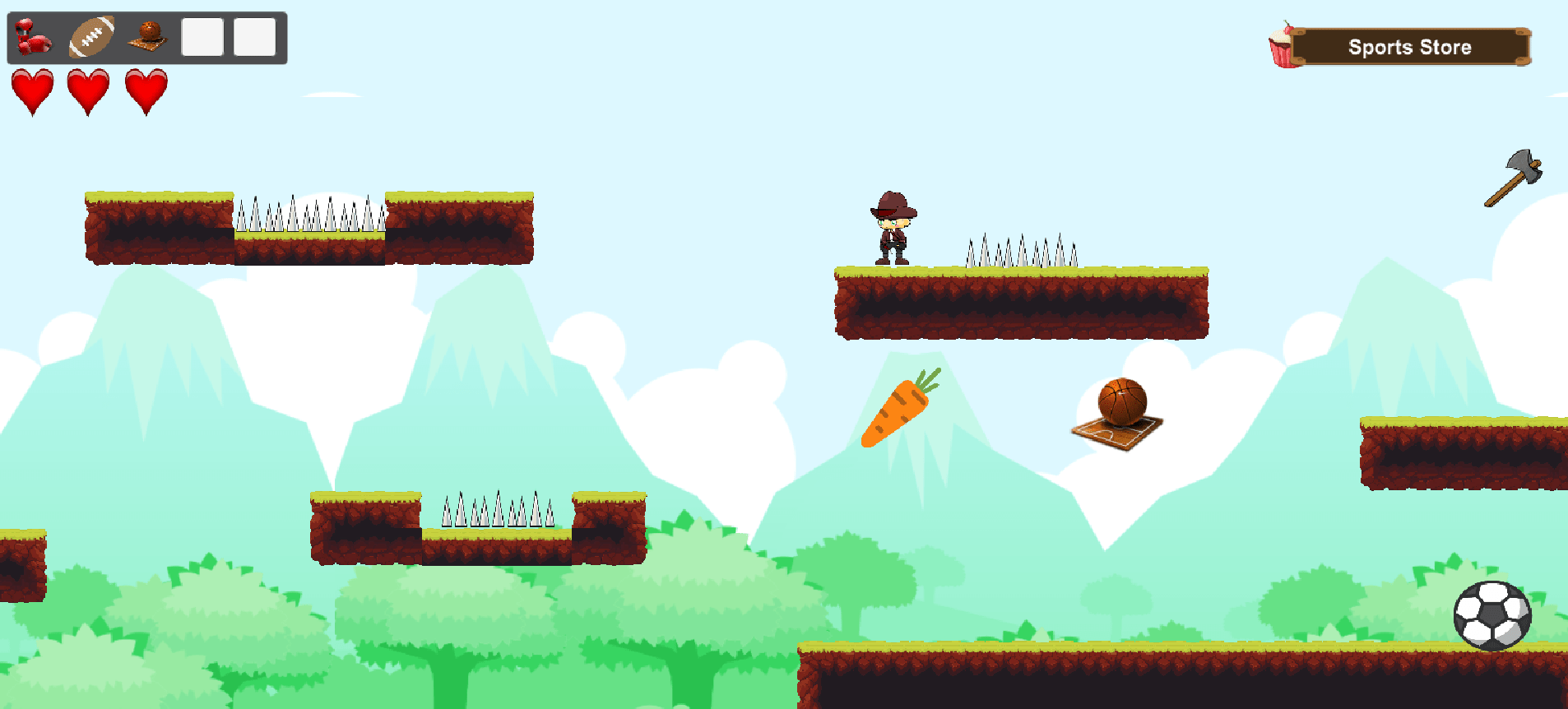 |
Anurag Sarkar, Seth Cooper ACM Annual Symposium on Computer-Human Interaction in Play (CHI Play), 2019 pdf | abstract | bibtex | poster Prior research has used player rating systems to balance difficulty in human computation games (HCGs) without having to modify their levels by assigning ratings to levels to indicate level difficulty. Skill chains have also been used to define difficulty progressions for such games. Both these methods typically involve associating a level with a single rating or set of skills as being representative of the difficulty of both the in-game mechanics of the level and the complexity of the task that it models, taken together as a single unit. Though effective, this may not be suitable for HCGs where the game and the task being modeled require different sets of skills and abilities. To this end, we introduce a disjoint skill model that separately tracks game and task skill and difficulty in a 2D platformer HCG. We find that the disjoint model enables players to solve more difficult tasks compared to a baseline model.
@inproceedings{sarkar19disjoint,
Author = {Sarkar, Anurag and Cooper, Seth},
Title = {Using a Disjoint Skill Model for
Game and Task Difficulty in Human Computation Games},
Booktitle = {Proceedings of the 2019 Annual
Symposium on Computer-Human Interaction in Play},
Year = {2019}
}
|
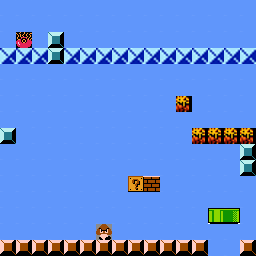 |
Anurag Sarkar, Zhihan Yang, Seth Cooper AIIDE Workshop on Experimental AI in Games (EXAG), 2019 pdf | abstract | bibtex | slides Previous work explored blending levels from existing games to create levels for a new game that mixes properties of the original games. In this paper, we use Variational Autoencoders (VAEs) for improving upon such techniques. VAEs are artificial neural networks that learn and use latent representations of datasets to generate novel outputs. We train a VAE on level data from Super Mario Bros. and Kid Icarus, enabling it to capture the latent space spanning both games. We then use this space to generate level segments that combine properties of levels from both games. Moreover, by applying evolutionary search in the latent space, we evolve level segments satisfying specific constraints. We argue that these affordances make the VAE-based approach especially suitable for co-creative level design and compare its performance with similar generative models like the GAN and the VAE-GAN.
@inproceedings{sarkar19controllable,
Author = {Sarkar, Anurag and Yang, Zhihan
and Cooper, Seth},
Title = {Controllable Level Blending between
Games using Variational Autoencoders},
Booktitle = {Proceedings of the EXAG Workshop
at AIIDE},
Year = {2019}
}
|
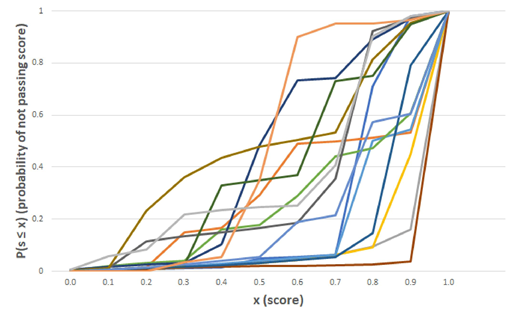 |
Anurag Sarkar, Seth Cooper ACM Foundations of Digital Games (FDG), 2019 pdf | abstract | bibtex | slides Rating systems (like Elo and Glicko-2) have previously been used for predicting the expected score that a player will achieve on a level. We present an approach that predicts not a single score, but an approximate cumulative distribution function over possible scores. This approach assigns each level an array of multiple ratings for different score thresholds. Our long-term goal is twofold: first, to dynamically change level difficulty for each player by using this CDF to tailor the target score required to complete a level; second, in human computation games (HCGs), to identify players capable of setting new high scores that could correspond to improved solutions to underlying tasks. To move towards this goal, we explore the rating array approach using two datasets: one gathered from the HCG Paradox, and one generated from idealized players and levels. We examine the accuracy of the CDF and the expected scores it predicts, as well as its use in serving levels to players who could set new high scores.
@inproceedings{sarkar19arrays,
Author = {Sarkar, Anurag and Cooper, Seth},
Title = {Using Rating Arrays to Estimate
Score Distributions for Player-versus-Level
Matchmaking},
Booktitle = {Proceedings of the
Foundations of Digital Games},
Year = {2019}
}
|
 |
Anurag Sarkar, Seth Cooper IEEE Conference on Games (CoG), 2019 pdf | abstract | bibtex | slides Prior work has focused on formalizing difficulty curves by using function composition to give precise definitions to curves and their transformations. However, the proposed framework was demonstrated using a single game, and the curves and transformations were defined with respect to the game's ratings-based dynamic difficulty system. In this work, we infer difficulty curves from gameplay data using a method that is based on the aforementioned difficulty system but that can also be generalized to other games for which information on player-vs-level win/loss outcomes is available. Moreover, since this method uses the same difficulty mechanism as past work, it lets us similarly leverage function composition to compare difficulty curves across games, having either a fixed or dynamic level ordering, using a clearly defined vocabulary. We use four different games to demonstrate our method, which relies on an adjustment to traditional playback of ratings-based match data, which we also present in this work.
@inproceedings{sarkar19inferring,
Author = {Sarkar, Anurag and Cooper, Seth},
Title = {Inferring and Comparing Game
Difficulty Curves using Player-versus-Level
Match Data},
Booktitle = {Proceedings of the IEEE
Conference on Games},
Year = {2019}
}
|
 |
Anurag Sarkar, Seth Cooper ACM Conference on Human Factors in Computing Systems (CHI), 2019 pdf | abstract | bibtex | slides Player engagement within a game is often influenced by its difficulty curve: the pace at which in-game challenges become harder. Thus, finding an optimal difficulty curve is important. In this paper, we present a flexible and formal approach to transforming game difficulty curves by leveraging function composition. This allows us to describe changes to difficulty curves, such as making them ``smoother'', in a more precise way. In an experiment with 400 players, we used function composition to modify the existing difficulty curve of the puzzle game Paradox to generate new curves. We found that transforming difficulty curves in this way impacted player engagement, including the number of levels completed and the estimated skill needed to complete those levels, as well as perceived competence. Further, we found some transformed curves dominated others with respect to engagement, indicating that different design goals can be traded-off by considering a subset of curves.
@inproceedings{sarkar19transforming,
Author = {Sarkar, Anurag and Cooper, Seth},
Title = {Transforming Game Difficulty Curves
using Function Composition},
Booktitle = {Proceedings of the ACM
Conference on Human Factors in Computing Systems},
Year = {2019}
}
|
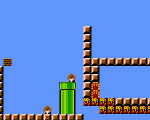 |
Anurag Sarkar, Seth Cooper AIIDE Workshop on Experimental AI in Games (EXAG), 2018 pdf | abstract | bibtex | code | slides Recent work has shown machine learning approaches to be effective in training models on existing game data for informing procedural generation of novel content. Specifically, ML techniques have successfully used existing game levels to train models for generating new levels and blending existing ones. Such blending of not just levels, but entire games, has also been proposed as a possible means of generating new games. In this paper, we build on these works by training Long Short Term Memory recurrent neural networks on level data for two separate platformer games---Super Mario Bros. and Kid Icarus---and use these models to create new levels that are blends of levels from both games, thus creating a level generator for a novel, third game.
@inproceedings{sarkar18blending,
Author = {Sarkar, Anurag and Cooper, Seth},
Title = {Blending Levels from Different
Games using LSTMs},
Booktitle = {Proceedings of the Experimental
AI in Games (EXAG) Workshop at AIIDE},
Year = {2018}
}
|
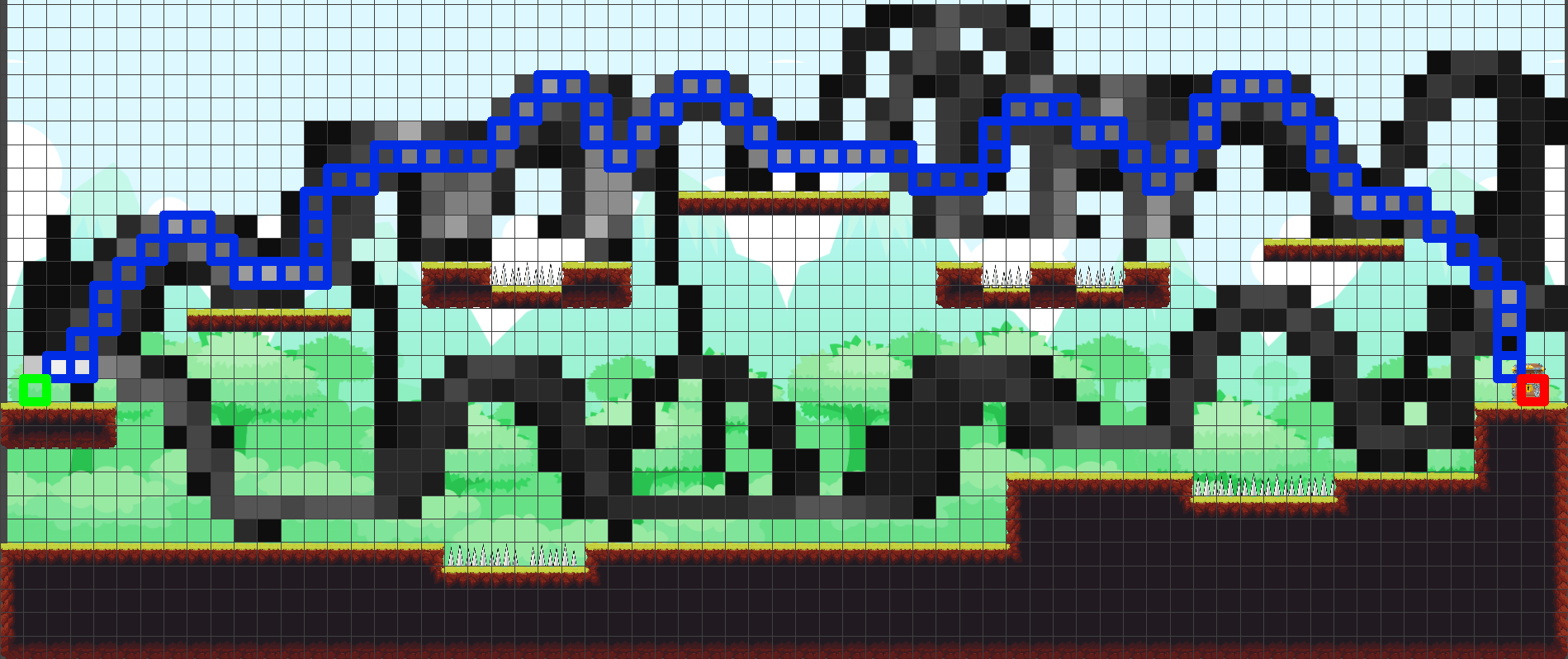 |
Anurag Sarkar, Varun Sriram, Riddhi Padte, Jeffrey Cao, Seth Cooper AIIDE Workshop on Experimental AI in Games (EXAG), 2018 pdf | abstract | bibtex | slides Many games feature collectible items that are manually placed by a designer. In this work, we developed an algorithm, inspired by \emph{desire paths}, for automatically placing collectible coins in a platformer game. Desire paths are paths naturally formed where people walk, rather than those laid down artificially, and are often the shortest or easiest route between an origin and destination. Our algorithm uses player trajectories to find paths along which to place the coins for each level. We ran an experiment comparing path-based placement to other placement methods. Although we did not find a difference in total time spent playing or likelihood of finishing the game, our results suggest that path-based placement leads to players collecting more coins in less time than with designer or randomly placed coins. Further, we found that players played similarly when coins were either path-based or there were no coins, and similarly when coins were either placed by a designer or randomly.
@inproceedings{sarkar18desire,
Author = {Sarkar, Anurag and Sriram, Varun
and Padte, Riddhi and Cao, Jeffrey and
Cooper, Seth},
Title = {Desire Path-inspired Procedural
Placement of Coins in a Platformer Game},
Booktitle = {Proceedings of the Experimental
AI in Games (EXAG) Workshop at AIIDE},
Year = {2018}
}
|
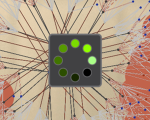 |
Anurag Sarkar, Seth Cooper ACM Foundations of Digital Games (FDG), 2018 pdf | abstract | bibtex | slides Paid platforms like Mechanical Turk are popular for recruiting players for playtesting and experiments. However, it is unclear if paid players have similar behavior or experiences as volunteers (i.e. players recruited for free through banner ads or game portals). In this work, we studied the impact of recruitment within human computation games, using two experiments. First, we compared voluntary recruitment versus paid recruitment with different compensation levels. We found that the highest paid players completed more levels (i.e. achieved a higher volume of completed tasks) and reported greater engagement than both volunteers and players paid less while volunteers completed levels of higher difficulty (i.e. achieved a higher quality of completed tasks) than paid players. Additionally, we also varied both recruitment strategy and the game's design and found no interaction effects, suggesting that while differences exist between volunteer and paid players, experimental changes do not impact those players differently.
@inproceedings{sarkar18comparing,
Author = {Sarkar, Anurag and Cooper, Seth},
Title = {Comparing Paid and Volunteer
Recruitment in Human Computation Games},
Booktitle = {Proceedings of the
Foundations of Digital Games},
Year = {2018}
}
|
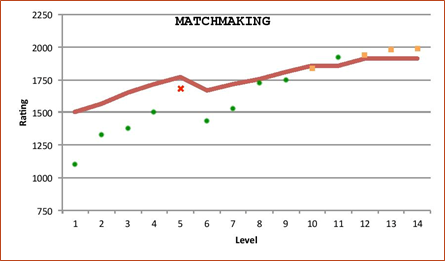 |
Anurag Sarkar, Seth Cooper ACM Foundations of Digital Games (FDG), 2018 pdf | abstract | bibtex | slides Previous work has demonstrated the effectiveness of rating system-based matchmaking for level ordering within the particular constraints of human computation games. However, players were not informed about the rating system, nor allowed to choose the difficulty of upcoming levels. Informing players of the ratings used in the system and offering them choice of upcoming level difficulty may enhance feelings of competence and control respectively, thereby further improving player engagement. Thus, we attempted to improve player experience by both exposing players to the underlying rating system, as well as offering them choice of level difficulty. We found that players cognizant of ratings both attempted and completed more levels than those who were not. Though additionally offering choice did not significantly affect behavior, we found that player choice was influenced by the outcome of the preceding level. Moreover, we did not observe any significant impact on self-reported measures of subjective experience.
@inproceedings{sarkar18meet,
Author = {Sarkar, Anurag and Cooper, Seth},
Title = {Meet your Match Rating: Providing
Skill Information and Choice in
Player-versus-Level Matchmaking},
Booktitle = {Proceedings of the Foundations
of Digital Games},
Year = {2018}
}
|
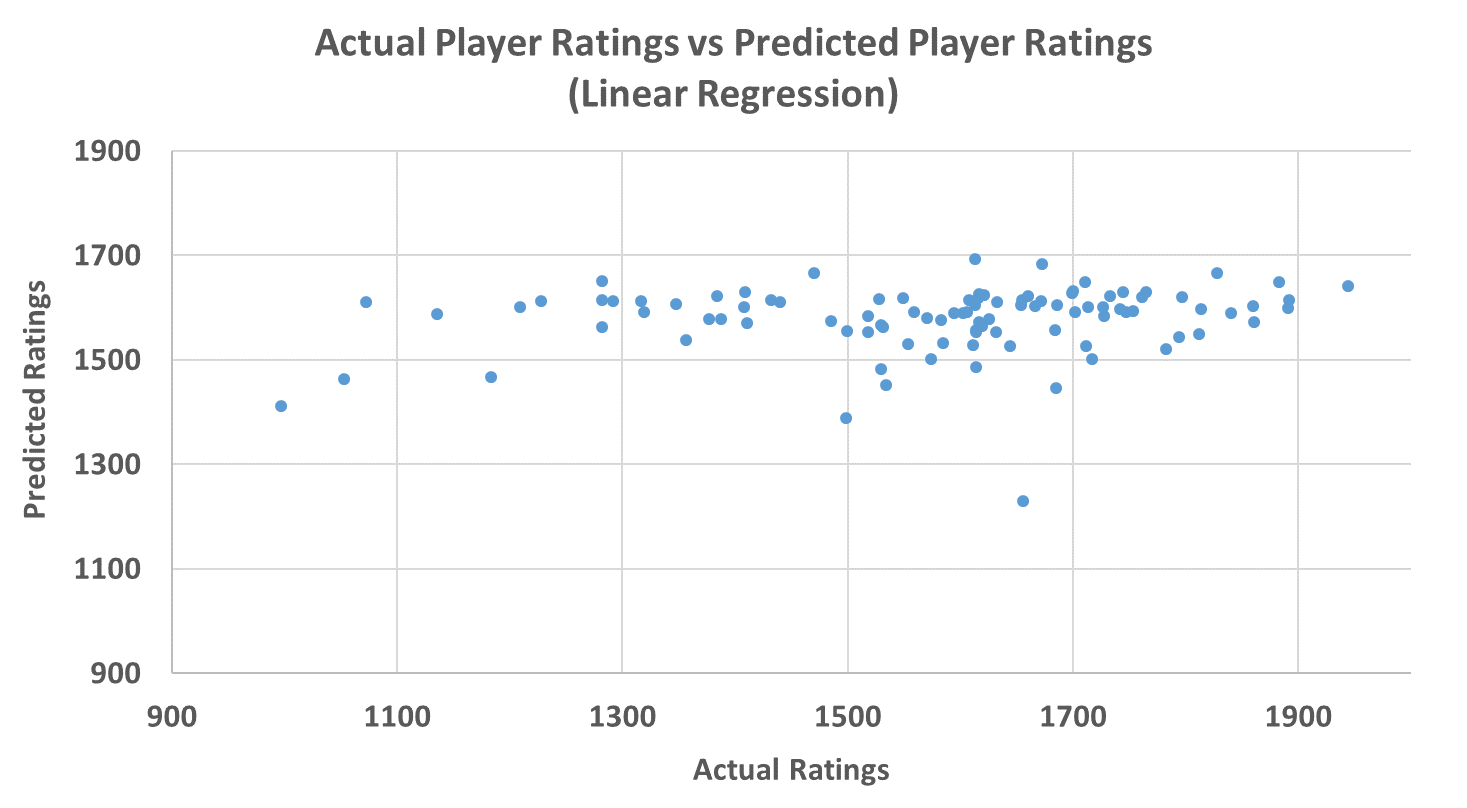 |
Anurag Sarkar, Seth Cooper AAAI Conference on Artificial Intelligence and Interactive Digital Entertainment (AIIDE), 2017 pdf | abstract | bibtex | poster Human computation games (HCGs) often suffer from low player retention. This may be due to the constraints placed on level and game design from the real-world application of the game. Previous work has suggested using player rating systems (such as Elo, Glicko-2, or TrueSkill) as a basis for matchmaking between HCG levels and players, as a means to improve difficulty balancing and thus player retention. Such rating systems typically start incoming entities with a default rating. However, when applied to HCGs, incoming entities may have useful information associated with them, such as player behavior during tutorials and properties of the tasks underlying the levels. In this work, we examined using features derived from player behavior and level properties to predict their eventual Glicko-2 ratings in the HCG \game{Paradox}. We found that using regression produced rating estimates closer to the actual ratings than default or baseline average ratings. The use of rating systems allows a unified approach to predicting both player skill and level difficulty.
@inproceedings{sarkar17level,
Author = {Sarkar, Anurag and Cooper, Seth},
Title = {Level Difficulty and Player Skill
Prediction in Human Computation Games},
Booktitle = {Proceedings of the AAAI Conference
on Artificial Intelligence and Interactive
Digital Entertainment},
Year = {2017}
}
|
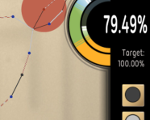 |
Michael Williams, Anurag Sarkar, Seth Cooper IFIP International Conference on Entertainment Computing (ICEC), 2017 pdf | abstract | bibtex Human computation games aim to apply human skill toward real-world problems through gameplay. Such games may suffer from poor retention, potentially due to the constraints that using pre-existing problems place on game design. Previous work has proposed using player rating systems and matchmaking to balance the difficulty of human computation games, and explored the use of rating systems to predict the outcomes of player attempts at levels. However, these predictions were win/loss, which required setting a score threshold to determine if a player won or lost. This may be undesirable in human computation games, where what scores are possible may be unknown. In this work, we examined the use of rating systems for predicting scores, rather than win/loss, of player attempts at levels. We found that, except in cases with a narrow range of scores and little prior information on player performance, Glicko-2 performs favorably to alternative methods.
@inproceedings{williams17predicting,
Author = {Williams, Michael and Sarkar,
Anurag and Cooper, Seth},
Title = {Predicting Human Computation
Game Scores with Player Rating Systems},
Booktitle = {Proceedings of the International
Conference on Entertainment Computing (ICEC)},
Year = {2017}
}
|
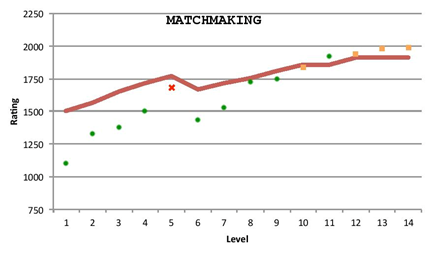 |
Anurag Sarkar, Michael Williams, Sebastian Deterding, Seth Cooper ACM Foundations of Digital Games (FDG), 2017 Best Paper Honorable Mention pdf | abstract | bibtex | slides Human computation games lack established ways of balancing the difficulty of tasks or levels served to players, potentially contributing to their low engagement rates. Traditional player rating systems have been suggested as a potential solution: using them to rate both players and tasks could estimate player skill and task difficulty and fuel player-task matchmaking. However, neither the effect of difficulty balancing on engagement in human computation games nor the use of player rating systems for this purpose has been empirically tested. We therefore examined the engagement effects of using the Glicko-2 player rating system to order tasks in the human computation game Paradox. An online experiment (n=294) found that both matchmaking-based and pure difficulty-based ordering of tasks led to significantly more attempted and completed levels than random ordering. Additionally, both matchmaking and random ordering led to significantly more difficult tasks being completed than pure difficulty-based ordering. We conclude that poor balancing contributes to poor engagement in human computation games, and that player rating system-based difficulty rating may be a viable and efficient way of improving both.
@inproceedings{sarkar2017engagement,
Author = {Sarkar, Anurag and Williams, Michael
and Deterding, Sebastian and Cooper, Seth},
Title = {Engagement Effects of Player Rating
System-based Matchmaking for Level Ordering in
Human Computation Games},
Booktitle = {Proceedings of the Foundations
of Digital Games},
Year = {2017}
}
|